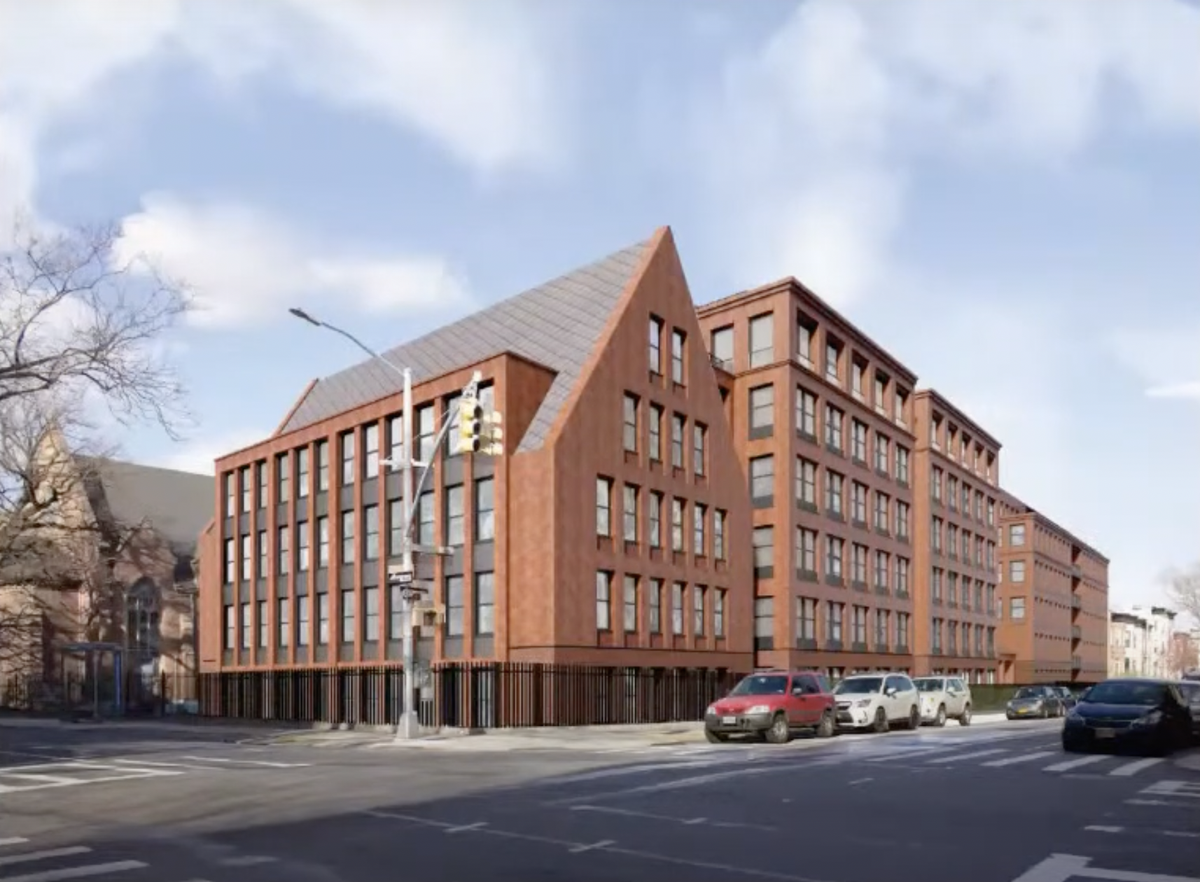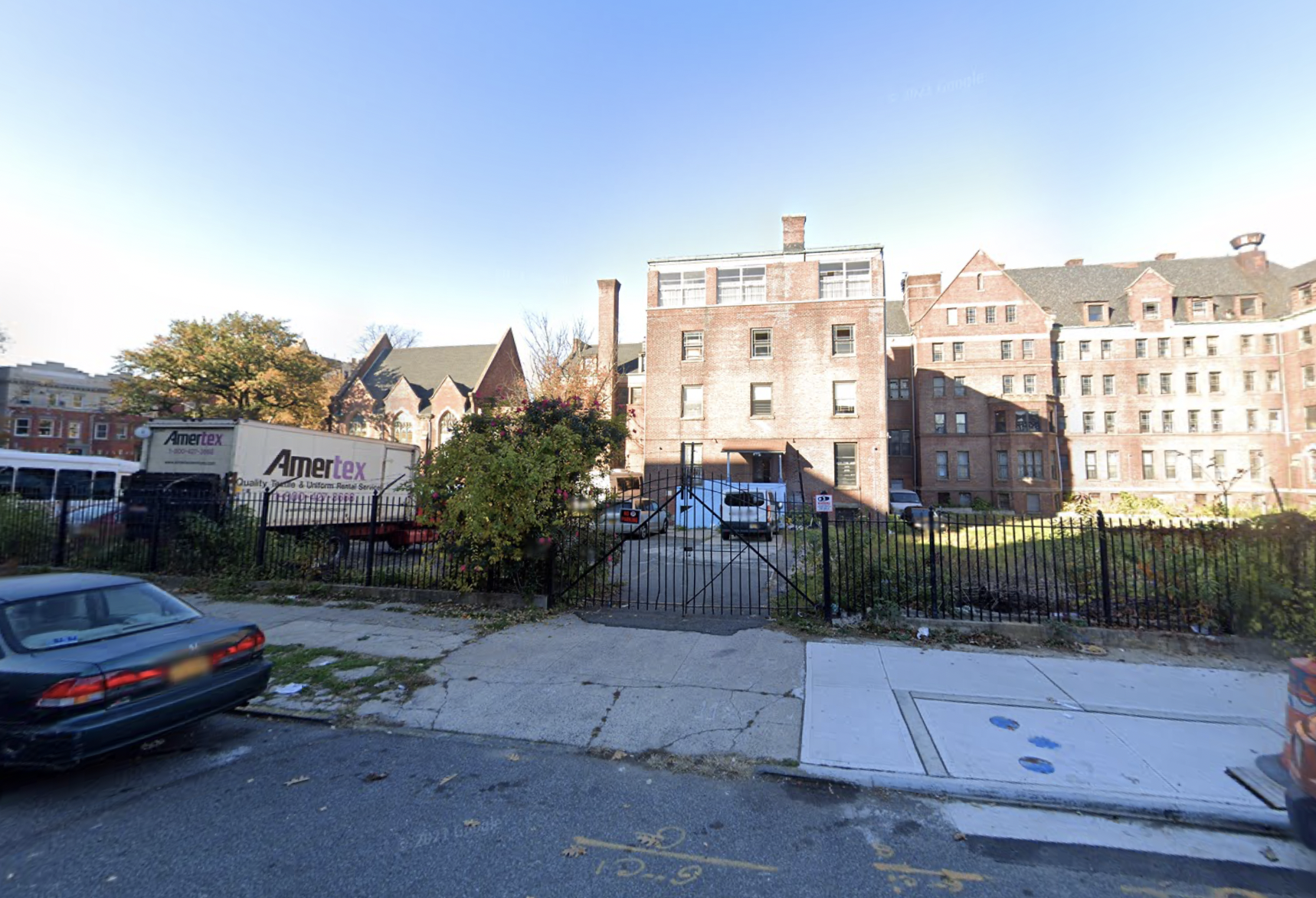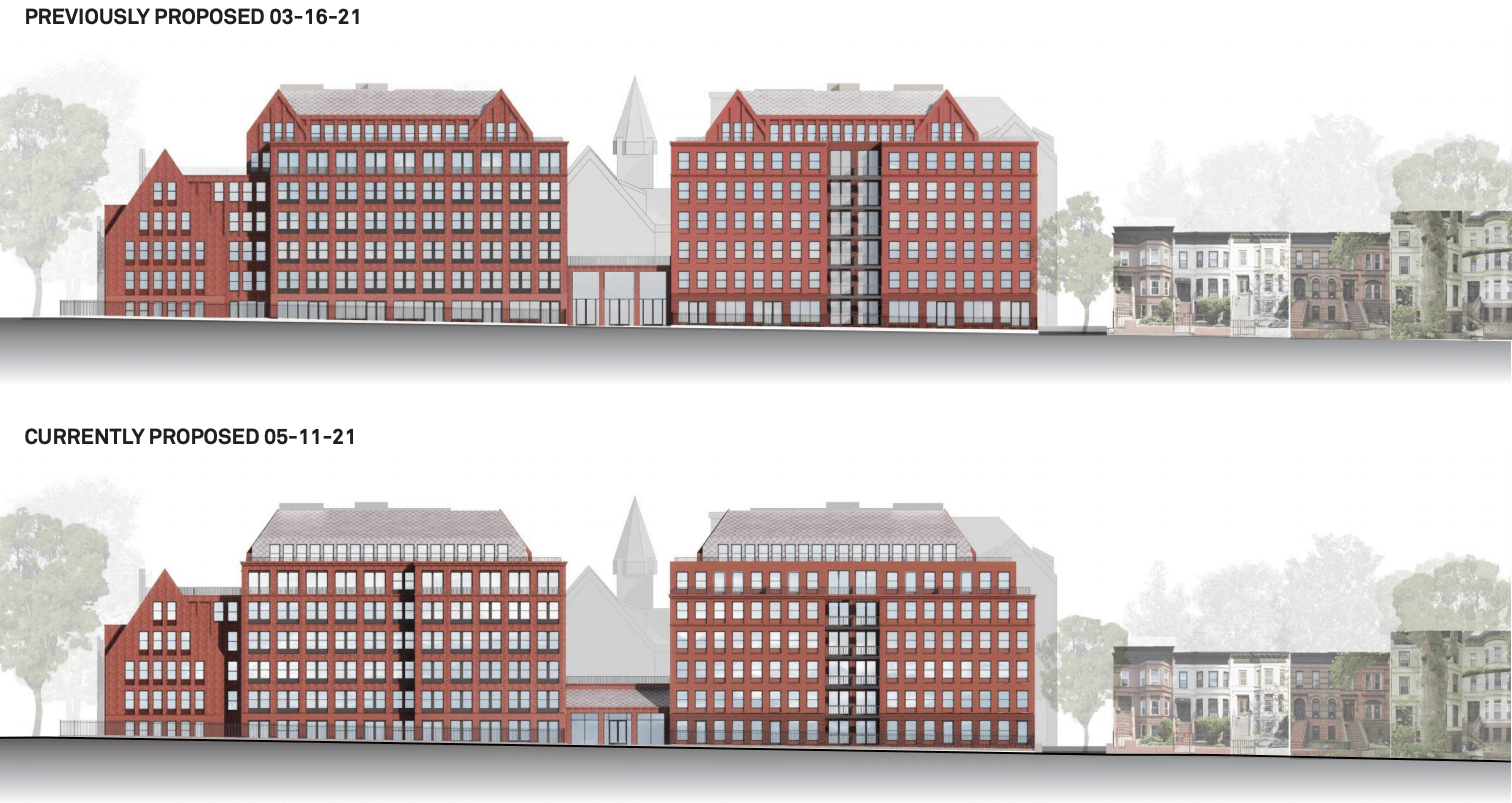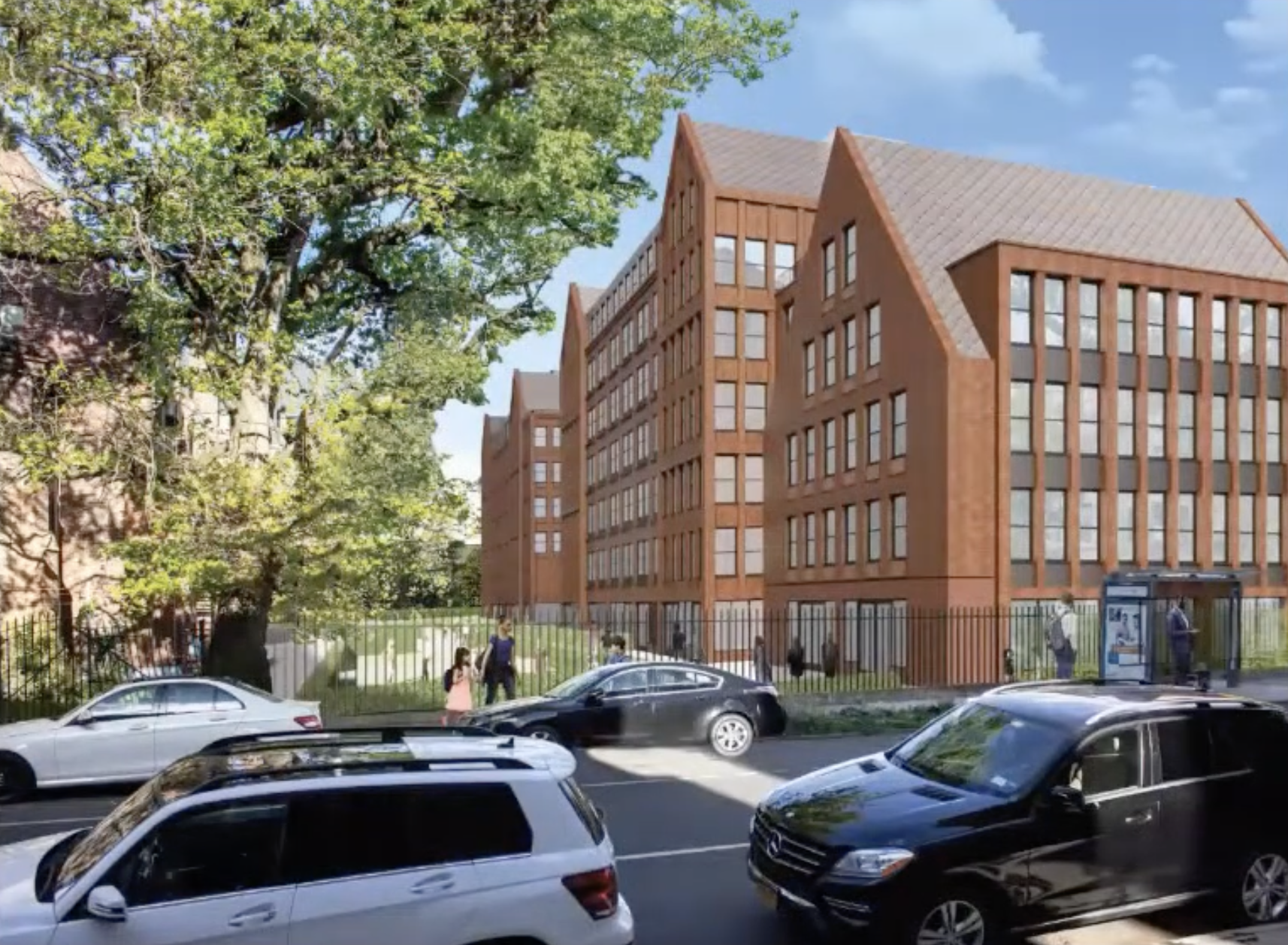City Landmarks Commission Approves Controversial Development at Hebron School in Crown Heights


The city’s Landmarks Preservation Commission (LPC) approved a hotly-contested proposal to build a residential development next to the Hebron Seventh Day Adventist School in Crown Heights on Tuesday,.
The development, which the LPC approved unanimously at its Tuesday hearing, will add two seven-story buildings to a lot located at 959 Sterling Street, with a total of 152 units of housing. 30% of the apartments will be priced below-market rate under the city’s Affordable Housing New York program.
The new development shares a parcel with a building constructed in 1889 as the Brooklyn Methodist Episcopal Home for the Aged and Infirm, which later became the Hebron Seventh Day Adventist School. The building and surrounding grounds were landmarked as part of the Crown Heights North Historic District in 2011.
But the historic building has fallen into such disrepair that students are no longer able to enter the building. The site’s owners, the Northeast Conference of the Seventh Day Adventist Church, say new development is necessary to pay for repairs, and have partnered with developer Hope Street Capital to build the residential complex on a mostly unused adjacent lot with some parking spaces.

The new development will cover the length of the property along Sterling Place, and replace the lot along with a mid-20th century addition at the back of the school, which will be demolished. The planned development, designed by the architect Morris Adjmi, fits within the area’s current zoning but required a Certificate of Appropriateness from LPC because of its location within the historic district.
Tuesday’s hearing was the third time Adjmi and Hope Street appeared before the LPC. At the first hearing last fall, commissioners criticized the mass of the building, which obstructed views of the school behind it. A revised version of the plan was presented in March, with the development split into two buildings connected by a glass atrium that allows the Hebron School to be seen from Sterling Place.
In the new proposal approved at Tuesday’s LPC hearing, the top floor of the eastern building, which is adjacent to historic rowhouses, has been moved back about 10 feet. The height of the glass connector was reduced, and fenestration on the ground floor was modified to make the building look “commercial,” in the words of some commissioners. The overall square footage has been reduced by about 14,000 square feet from the original proposal.

This time, landmarks commissioners responded favorably to the design proposal.
“I think that the project has improved, I think that it is appropriate in general terms,” Commissioner Michael Goldblum said. “I think that the stepping down in scale is contextual. It handles mass similar to the way that mass is handled in other buildings in the district.”

But the project has generated opposition from many locals, including from local Councilmember Robert Cornegy, Community Board 8, and various community groups. LPC staff said they received over 300 letters in opposition to the project from individuals who argue that the building is out of sync with the surrounding historic district and that the below-market rate units are insufficiently affordable.
In a Facebook post, Cornegy said he was “disappointed” by the LPC’s decision. Meanwhile, two neighborhood groups, the Crown Heights North Association and Friends of 920 Park, have begun fundraising for a lawsuit in an attempt to stop the project.
“Thousands of residents, local officials and community groups were utterly dismissed after months of protest,” Friends of 920 Park said in a statement published after the decision. “We put our weight against the door of an invading developer, and LPC has nonchalantly unlatched it, and let them in. “




